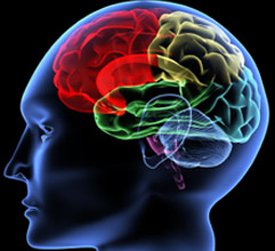Global Scans · Neuroscience · Weekly Summary

- [New] Lower gray matter volume at baseline predicted higher reward-seeking behaviour two years later, suggesting a meaningful link between early brain development and later behavioral tendencies. American Foundation for Suicide Prevention
- [New] University of Queensland researchers have developed a promising new anti-inflammatory drug and, for the first time, used advanced imaging to watch its effects unfold inside the living brain, a breakthrough that could accelerate treatments for Parkinson's disease. The University of Queensland
- [New] Over the next three years, we believe AI will stop being a collection of tools and instead become the central operating brain of vessel management. Cyprus Shipping News
- [New] Eventually, interfaces might disappear through brain-computer interfaces now under development by companies like Neuralink, Synchron and Precision Neuroscience. Forbes
- [New] Monash University researchers set out to investigate whether music-related leisure activities could potentially lower the risk of dementia and cognitive impairment no dementia, as well as better brain function in healthy older adults. New Atlas
- Whole-brain interfacing is going to be the future. Scientific American
- University of Virginia School of Medicine and Naval Medical Research Command researchers will use a federal Department of Defense grant to better identify, prevent and treat brain injuries for military personnel caused by repeated blast exposures. News-Medical
- Greater artificial light at night correlated with increased brain stress signals, inflamed blood vessels, and higher heart disease risk. ScienceDaily
- In 2025, AI voice changers will be more human, faster, and adaptable - thanks to neural networks and machine learning models. Smallest.ai
- The enrichment of SCZ-associated genes for the hippocampus could support the presence of clinically relevant targets for BCI/DBS therapies in the brain region area. PubMed Central (PMC)
- The BCI devices are expected to lead to a more accurate recording and potential intervention on brain activities. PubMed Central (PMC)
- Everything you think is the future is happening years earlier than expected: one-person AI agencies are replacing companies, longevity tech is moving into shopping malls, pop culture is merging with neural tech, and early prototypes of off-world economies already exist. Medium
- Features of a blood smear are used to train a neural network to predict haematocrit and RBC count. PubMed Central (PMC)
- The Aberdeen center becomes its third research site, expanding participation opportunities and strengthening Scotland's position as an international hub for brain health innovation. Scottish Enterprise Newsroom
- By 2035, AI will be the brains behind traffic management, shifting from reactive signal timing to predictive, self-optimising networks. ITS International
- Leading retailers in the US employ advanced neural networks and reinforcement learning to anticipate consumer buying behaviours during promotional campaigns and seasonal fluctuations. The Council of Procurement & Supply Chain Professionals
- The brain-computer interface (BCI) will move from experimental treatment for paralysis to a broader therapeutic tool. Futurist Speaker on AI Leadership, Future of Work, Futu
- Brain-computer interfaces developed by companies like Neuralink and competing technologies will enable thought-based shopping, where desire and acquisition merge into a single cognitive action. Futurist Speaker on AI Leadership, Future of Work, Futu
- There are up to 680 companies worldwide at least dabbling in brain-computer interface (BCI) technology, making for a sector valued at $1.74 billion in 2022, and expected to grow to $6.2 billion by 2030. Time
Last updated: 07 December 2025
